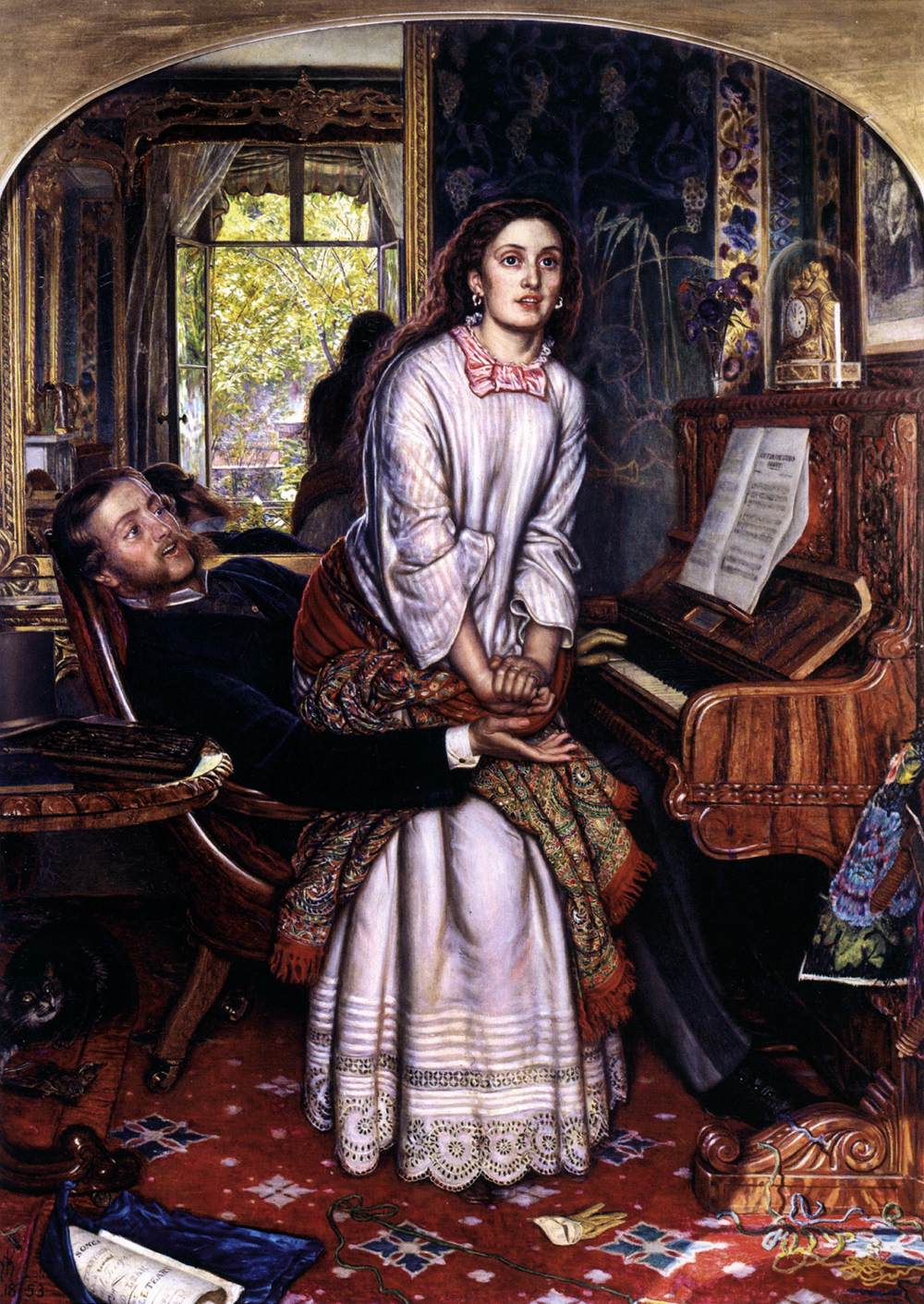Description
The painting "The Awakening Conscience" by artist William Holman Hunt is a masterpiece of the Pre-Raphaelite movement dating from 1853. This painting depicts a young woman realizing her lover's status and rising from his lap to look outwards . The painting is a striking representation of Victorian morality and how society viewed women at the time.
The artistic style of the painting is typical of the Pre-Raphaelite movement, which is characterized by attention to detail and precision in depicting nature. The composition of the painting is impressive, with the woman in the center of the image and a window that opens outwards. The light coming through the window illuminates the woman's face, bringing out her expression of surprise and amazement.
The color of the painting is very vibrant and full of symbolism. The red of the woman's dress symbolizes passion and desire, while the green of the outer landscape symbolizes hope and freedom. The history of the painting is interesting, as it was commissioned by art collector Thomas Fairbairn, who wanted a work that represented Victorian morality.
In addition, the painting has little-known aspects, such as the fact that the model that posed for the woman was the artist's lover, Annie Miller. It is also said that the painting was inspired by a popular song of the time called "The Lost Chord", which speaks of the search for truth and redemption.
In conclusion, "The Awakening Conscience" by William Holman Hunt is a fascinating painting depicting Victorian morality and the role of women in the society of the time. Its artistic style, composition, color and symbolism make it a masterpiece of the Pre-Raphaelite movement and one of the most interesting paintings of the Victorian era.

